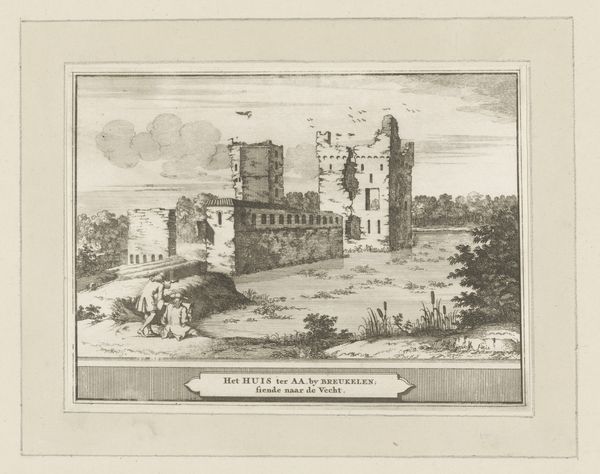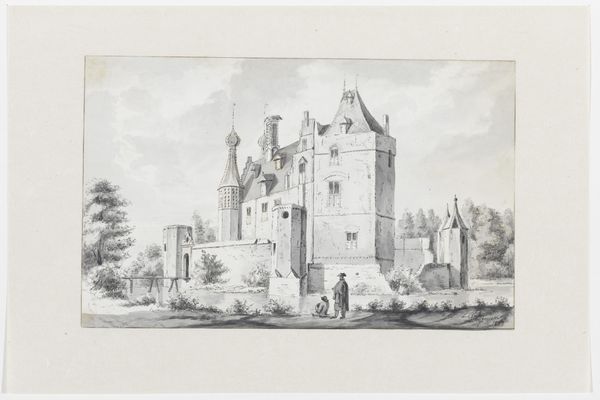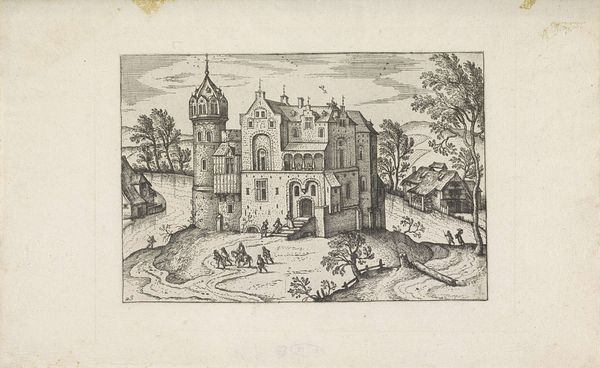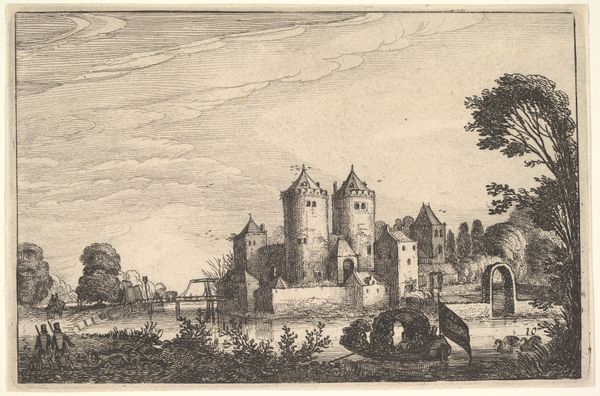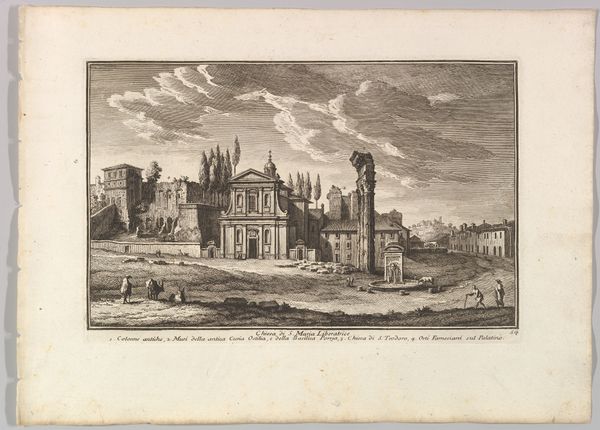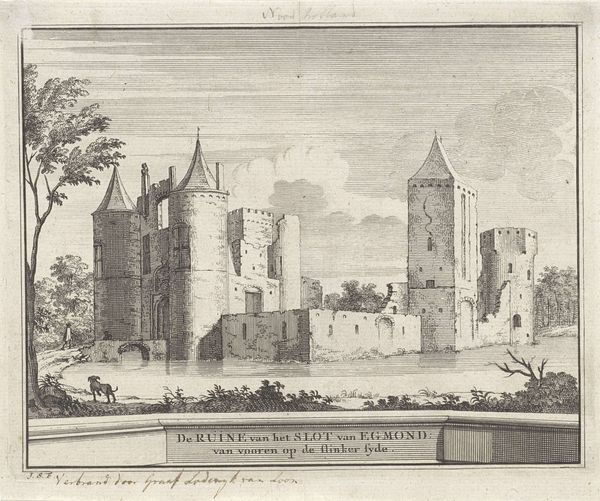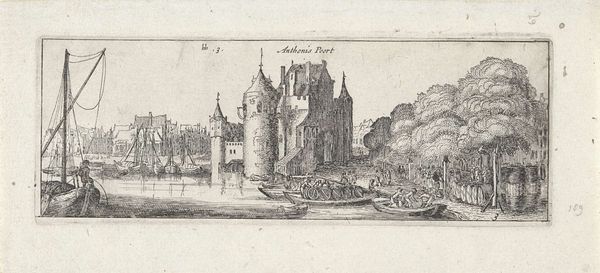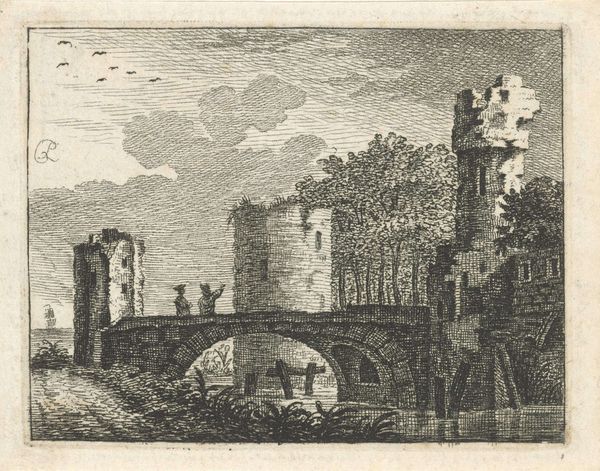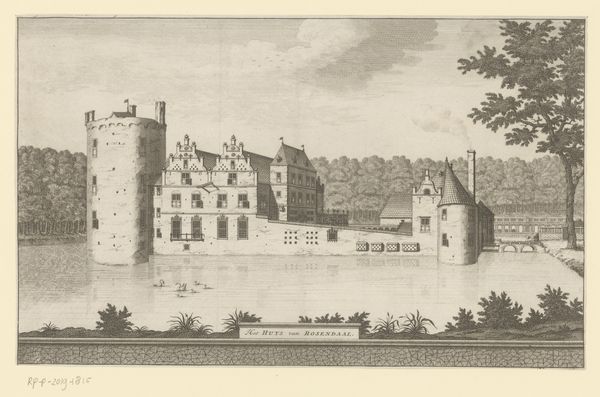
print, engraving
#
baroque
# print
#
old engraving style
#
landscape
#
cityscape
#
engraving
Dimensions: height 70 mm, width 81 mm
Copyright: Rijks Museum: Open Domain
Abraham Zeeman etched this print of Duurstede Castle in the Netherlands sometime in the first half of the 18th century. The castle’s ruined state speaks to larger shifts in Dutch society and politics. By the 1700s, the Netherlands’ Golden Age had long passed. The print shows how far the area had fallen from its former glory. Zeeman rendered Duurstede Castle as a crumbling edifice, seemingly abandoned. In the foreground, common folk go about their daily lives seemingly unconcerned about the ruins behind them, showing an acceptance of decline. Prints like these were cheap to produce and easy to distribute. They reflect a wider popular interest in picturesque scenes that also romanticized the past, especially among those nostalgic for times gone by. To understand this work fully, we can consult period maps, local histories, and estate records. These resources offer a more complete picture of how Dutch society adapted to changing economic and political circumstances. The meaning of art is contingent on such contexts.
Comments
No comments
Be the first to comment and join the conversation on the ultimate creative platform.

